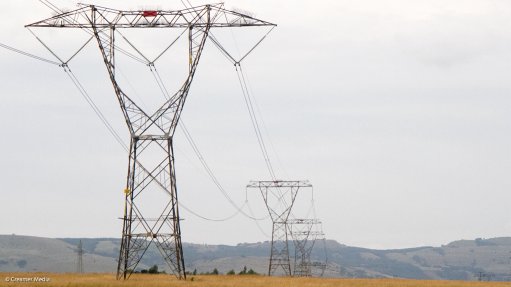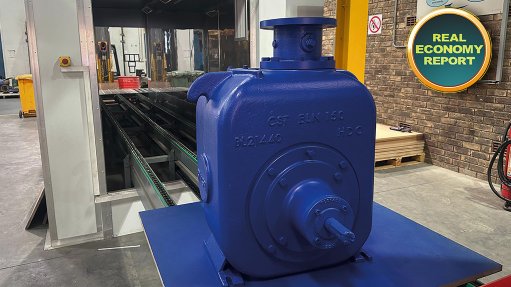What manufacturers can do now to maintain continuity in the new normal
This article has been supplied.
Manufacturers and distributors are operating in intensely pressured times. Stats SA reported that manufacturing output contracted for the ninth consecutive month in February of 2020 with the full extent of the damage caused by Covid-19 and the nationwide lockdown still unknown.
There is no doubt that COVID-19 has tested all companies’ contingency and business continuity plans to the fullest, and in some cases resulted in some quick amendments and additions. Some businesses have been mandated to close during lock-downs, while others have had to move quickly, to increase production levels of their current essential lines to answer demand or change their operational output to produce new PPE-related products.
As COVID-19 lock-downs begin to ease, manufacturers — who are often the heart of the economy and contribute just under 14% to South Africa’s Gross Domestic Product — have come to understand the need to urgently adjust their operational strategies, increase agility, while maintaining continuity, particularly for procurement and the supply chain.
While you might feel like you are steering into a storm, there are proactive steps that can be taken to ensure you navigate safely through to calmer waters says Paulo de Matos, SYSPRO Chief Product Officer.
Gain greater visibility of your supply chain
Supply chains have been disrupted due to worldwide lockdowns, and the closing of borders, airports, and ports to anything but essential items have seen procurement teams scrambling for locally based suppliers to ensure they can fulfil existing orders and continue with new orders. To be more resilient, businesses need to be able to quickly revise their supply-chains and shift from cost optimisation to supply security; and at the same time, ensure diversification of distribution, logistics and freight channels.
By implementing a digitally-enabled Enterprise Resource Planning (ERP) system that gives them greater visibility across their supply chain, especially inventory levels at the critical stages, procurement teams can play a significant role in solving supply chain challenges. Focus should be to more accurately calculate demand, post new tenders and RFQs, and ensure that the right levels of inventory and raw materials are ordered and delivered, in the right quantities, and at the right price, while still helping to mitigate risk along the supply chain both now, and into the future.
By creating the much-needed visibility, ERP technology is enabling the application of different procurement practises and policies. It is helping to change the linear supply chain into an expanded network of stakeholders, allowing the procurement team to diversify their procurement mix and supply chains, and reduce their dependence on any single country or supplier. The new supply chain also allows for the addition of critical steps like temporary amendment of planned receiving, and manufacturing process-steps, to include additional quality assurance and safety stock levels.
Localise your supply chain
Reducing costs has long been a primary driver for using international suppliers from markets with lower labour costs, such as China.
On-shoring, a recent trend, is the “bringing home” of offshore manufacturing, may create a stronger localised supply chain but will most likely increase manufacturing costs, and ultimately create higher prices for consumers, but it brings with it a number of material benefits. The global lock-down has resulted in numerous small businesses suffering financially, for example. By re-establishing local manufacturers and bringing these smaller local businesses into your supply chain, you will be helping to bring much needed financial relief to your regional and national economy, increase tax revenues and boost the job market. With time, you will also benefit from enhanced product quality and improved supplier standards.
The environment will also benefit, as you will be able to reduce the carbon footprint of your products due to a reduced amount of long-distance transportation.
Use technology to connect the remote workforce
Social distancing has become the new normal, and entire workforces, while having to remain separated, have needed to connect and collaborate remotely. Some businesses are being forced to work with half their normal staff compliment, with split-teams working alternate weeks, to prevent transmission of the Coronavirus across the entire business.
For those who have already started their digital journey, and who have a digitally-enabled ERP system, this sudden shift brought on by COVID-19 has been easier to respond to, than those who have not. ERP has allowed improved visibility into stock availability, material requirements, suppliers, and outstanding orders, and spend with existing suppliers. The organisation can also see the number of incoming customer orders, and gain insights into potential future orders, and see at a glance what their customer’s financial standing is with the business, prior to accepting any new orders. The power of a fully integrated ERP system cannot be under-estimated in troubled times like the present.
Manufacturers who are still reliant on manual processing, data capturing and reporting, are at risk of not being agile enough, of delayed decision-making based on unreliable data, and even the possibility of falling short of new government-mandated automated document processing requirements. This can be detrimental to the well-being of the business.
Manufacturers can greatly benefit from using technology and ERP to enable their remote workforce by giving them immediate insight into business activities. Accessibility to information is critical for proper decision making in every business no matter the situation. The use of automated business systems supports the efficient management of procurement and sourcing policy changes, improved distribution and lead-time planning, and better decision-making based on relevant, and accurate real-time data.
The way forward
We have all had to accept and adapt to the changes that this new world has brought, and these are just a few steps that can be taken to ensure your business is more agile and resilient to an ever-changing environment. As more businesses reconsider their business model, and the challenges of a new operational environment, the requirement to implement a digitally optimised ERP system that can facilitate agility and resilience should be high on the management agenda.
For those who have been delaying the transition to digital, the lessons we are learning together around the world, are evidence of the clear need for a transition to a digitally smarter business environment.
Article Enquiry
Email Article
Save Article
Feedback
To advertise email advertising@creamermedia.co.za or click here
Comments
Press Office
Announcements
What's On
Subscribe to improve your user experience...
Option 1 (equivalent of R125 a month):
Receive a weekly copy of Creamer Media's Engineering News & Mining Weekly magazine
(print copy for those in South Africa and e-magazine for those outside of South Africa)
Receive daily email newsletters
Access to full search results
Access archive of magazine back copies
Access to Projects in Progress
Access to ONE Research Report of your choice in PDF format
Option 2 (equivalent of R375 a month):
All benefits from Option 1
PLUS
Access to Creamer Media's Research Channel Africa for ALL Research Reports, in PDF format, on various industrial and mining sectors
including Electricity; Water; Energy Transition; Hydrogen; Roads, Rail and Ports; Coal; Gold; Platinum; Battery Metals; etc.
Already a subscriber?
Forgotten your password?
Receive weekly copy of Creamer Media's Engineering News & Mining Weekly magazine (print copy for those in South Africa and e-magazine for those outside of South Africa)
➕
Recieve daily email newsletters
➕
Access to full search results
➕
Access archive of magazine back copies
➕
Access to Projects in Progress
➕
Access to ONE Research Report of your choice in PDF format
RESEARCH CHANNEL AFRICA
R4500 (equivalent of R375 a month)
SUBSCRIBEAll benefits from Option 1
➕
Access to Creamer Media's Research Channel Africa for ALL Research Reports on various industrial and mining sectors, in PDF format, including on:
Electricity
➕
Water
➕
Energy Transition
➕
Hydrogen
➕
Roads, Rail and Ports
➕
Coal
➕
Gold
➕
Platinum
➕
Battery Metals
➕
etc.
Receive all benefits from Option 1 or Option 2 delivered to numerous people at your company
➕
Multiple User names and Passwords for simultaneous log-ins
➕
Intranet integration access to all in your organisation

















